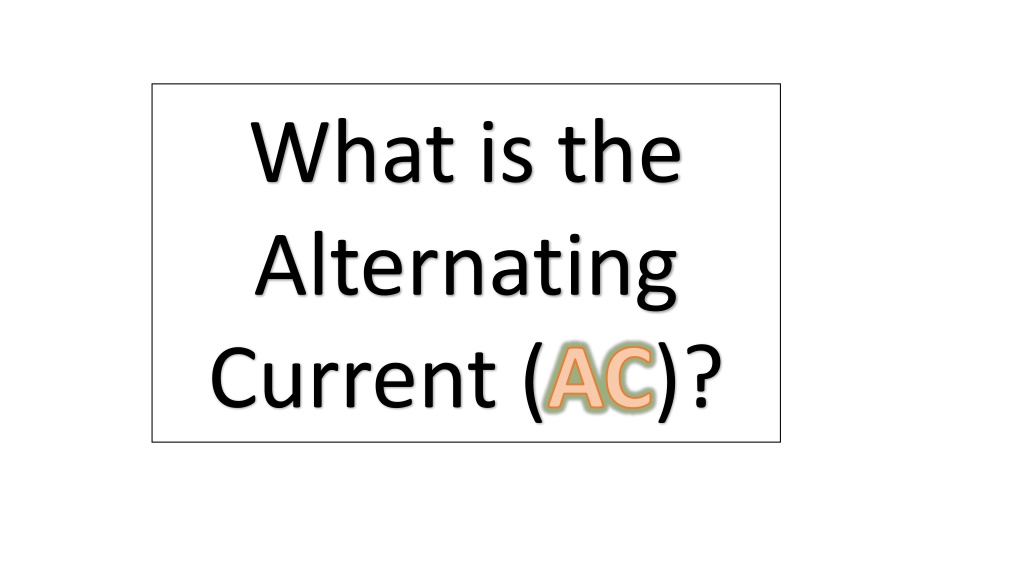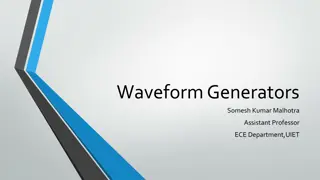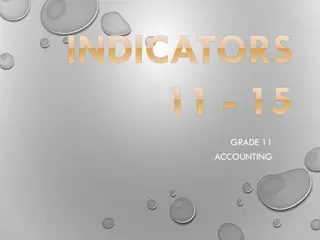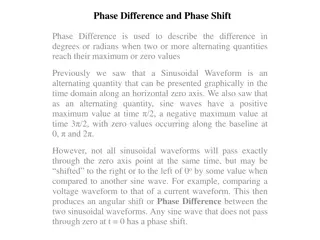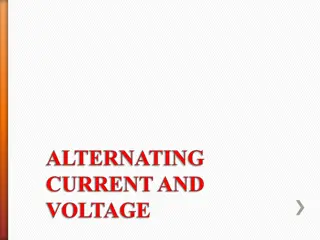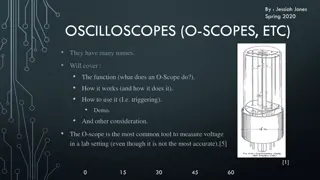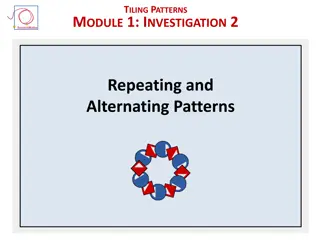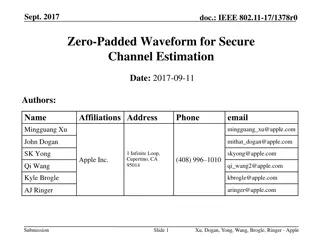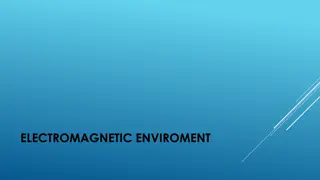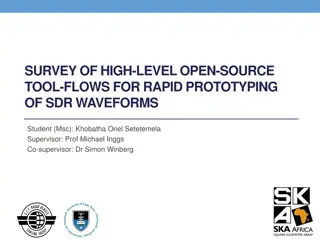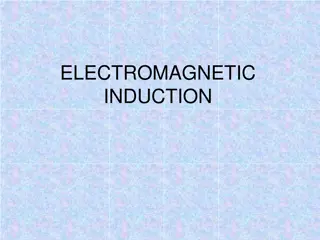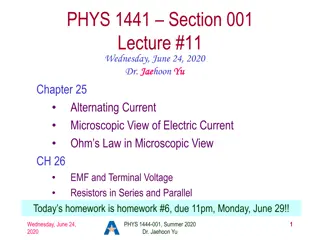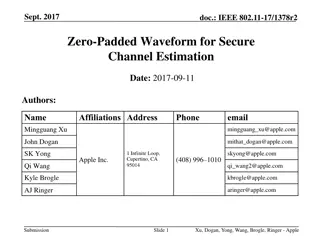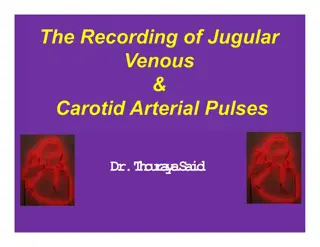Alternating Current (AC) Waveforms
Alternating Current (AC) is a type of current where the direction of flow reverses periodically. The need for an AC circuit arises due to its ability to easily transform voltage levels and transmit electricity over long distances efficiently. AC waveforms can be sinusoidal or square wave, with varying magnitude over time following a specific pattern in each half cycle. The sinusoidal current exhibits a smooth variation in magnitude resembling a sine wave pattern.
Download Presentation

Please find below an Image/Link to download the presentation.
The content on the website is provided AS IS for your information and personal use only. It may not be sold, licensed, or shared on other websites without obtaining consent from the author. Download presentation by click this link. If you encounter any issues during the download, it is possible that the publisher has removed the file from their server.
E N D
Presentation Transcript
What is the Alternating Current (AC)?
Why the AC generated? What is the need for an AC circuit? Alternating Current Waveforms Different (Alternating) Sinusoidal Current Waveform Generators
There are 2 types of Current DC = Direct Current - current flows in one direction AC = Alternating Current- current reverses direction 100 times per second (50 Hz).
Electricity D.C. Direct Current A.C. Alternating Current
In Positive Half Cycle The Charge Direction Is as Indicated In Negative Half Cycle The Charge Direction is Reversed Physically, the alternating current is that in each cycle of period (?) seconds, the current flow in one direction along the conductor during the time direction is reversed in the negative half cycle. This described current considered as a square wave current. ? 2 seconds, while this ? ? ? 2
? ???? ? 3? 4 ? 4 ? 2 ???? ????
The sinusoidal current is an alternating current also, like the square wave current, but the difference is the variation of the current magnitude with time will not be constant as the that of the square wave, but it varies in sinusoidal behavior with time. This waveform can be described as follows: A. The positive half cycle: which means that the drift velocity ? of the electrons (the current carriers) is in a certain forward direction inside the conductor as follows: 1- From ? = ?? to ? = ? ? ? The magnitude of the drift velocity equal to zero at starting ? = 0s then this value increases gradually until it reaches its maximum value at ? = increase in the current magnitude from (? = 0) Ato ? = ????A in this period. 2- From ? = ? ? ? , to ? = ? ? ? The magnitude of the drift velocity equal to its maximum value at ? = value decreases gradually until it reaches zero at ? = the current magnitude from (? = ????) A to ? = 0 A in this period. ? 4 . This leads to an ? 4 s then this ? 2 . This leads to a decrease in
B-The negative half cycle: which means that the drift velocity ? of the electrons (the current carriers) is in a certain backward direction inside the conductor as follows: 3- From ? = The magnitude of the drift velocity equal to zero at starting instant ? = value increases gradually until it reaches its maximum value at ? = an increase in the current magnitude from (? = 0) A to ? = ????A in this period. ? ? ? , to ? = ? ? ? ? ? 2 then this 3? 4 . This leads to 4- From ? = ? ? ? ? , to ? = ? ? The magnitude of the drift velocity equal to its maximum value at ? = value decreases gradually until it reaches zero at ? = ? . This leads to a decrease in the current magnitude from (? = ????) A to ? = 0 A in this period. 3? 4 s then this
Definition of the Instantaneous, Maximum, Peak to Peak and the Frequency. ? =1 ?
